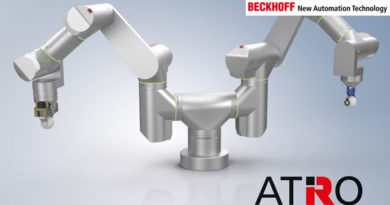

Everyone in the industrial manufacturing community has heard stories about downtime. But for those who have lived it, statistics such as one hour of downtime cost manufacturers up to $260,000 per hour or two million dollars in 4 hours do not tell the entire story. Aside from monetary losses, the actual cost of downtime includes a disillusioned workforce which becomes more difficult to motivate when persistent equipment failures occur. These are some of the reasons why the automation of predictive maintenance is fast becoming an industrial concept that enterprises integrate into everyday business operations.
Predictive maintenance as an Industrie 4.0 business model
Predictive maintenance involves taking a preemptive approach to discovering faults in, maintaining, and repairing factory equipment before it fails. As with every Industrie 4.0 concept, this approach also relies on data capture and analytics. Thus, the ability to understand the historical and current data a shop floor asset produces is the foundation for automating maintenance tasks at both component and assembly level.
Although predictive maintenance is an Industrie 4.0 concept, it still applies to both legacy and relatively new assets. According to
The Plant Engineer’s Handbook, predictive maintenance has the ability to reduce downtime by
approximately 20% while the option of automating the process can further increase this percentage and reduce unplanned downtime. The choice to integrate the automation of predictive maintenance across the shop floor also comes with many benefits which include:
1. Reduction in total manufacturing cost (TMC) – In manufacturing, maintenance costs, repairs, and costly replacements add up to a considerable proportion of the TMC of developing a product. Automating predictive maintenance helps reduce these costs in significant ways. These ways include having knowledge of a piece of equipment’s life span, scheduling planned downtimes, and planning inventory lists for spare parts.
Automated predictive maintenance initiatives lead to planned downtimes that reroute production away from affected equipment. They also eliminate the possibility of human errors in calculations which can delay the repair or maintenance activities associated with shop floor equipment. The automated process also comes with its own butterfly effect on an enterprise’s spare parts inventory. The knowledge of the task to be done can be used to automate the purchase of replacement parts ahead of time, thus reducing excessive stocking while ensuring the maintenance team has all the tools required for the task.
2. Increased service life of machine components – Automating regular predictive maintenance activities ensures the task is completed as and when due. The discipline of keeping to a strict schedule where maintenance is concerned increases the life span of components in a machine. This is because the machine and its components will be equipped with the resources needed to keep it running until the next maintenance cycle.
3. Reduced accidents on shop floors – In manufacturing facilities, material handling equipment is responsible for approximately 85 fatalities and thousands of injuries yearly in the US alone. These incidents occur due to dysfunctional forklifts, employee negligence, and more importantly, poorly maintained material handling equipment. This is where automating predictive maintenance activities come into play. With proper maintenance, material handling equipment and other engineering assets will function as expected without springing any surprises on unsuspecting shop floor workers.





